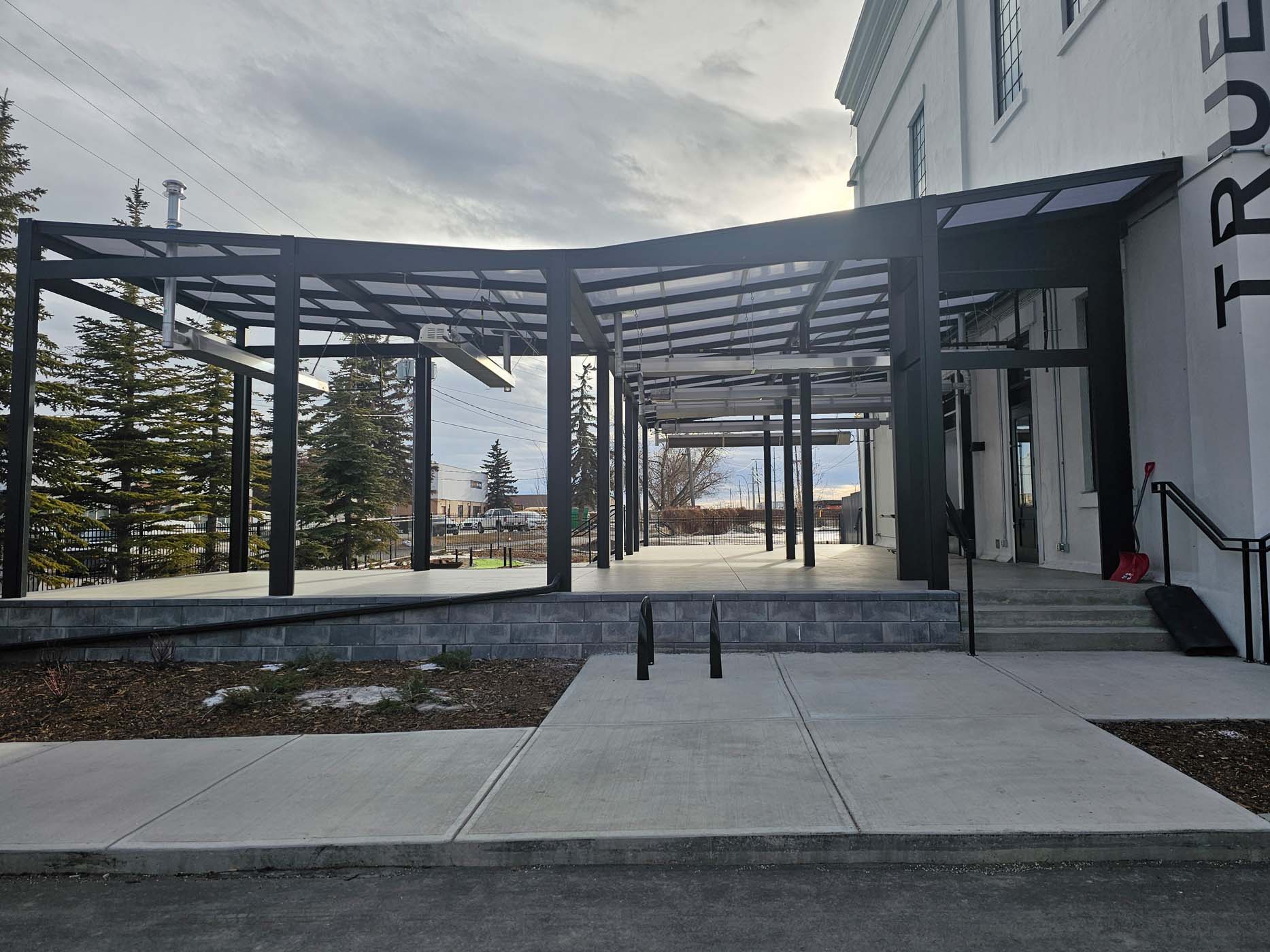Whenever a heating device involves high temperatures, the first thought that crosses most people’s minds is safety, and rightly so. Whether you’re heating your home, a restaurant patio, or an industrial workspace, understanding potential fire risks is critical. When it comes to infrared heaters, one of the most frequently asked questions is: “Do infrared heaters pose a fire hazard?”
The short answer is infrared heaters are among the safest heating options available when properly installed and maintained. Unlike fan-forced or open-flame heaters, infrared systems transfer heat directly to objects and surfaces through electromagnetic radiation, a clean, efficient process that eliminates many of the risks associated with combustion or convection-based heat sources.
But to fully understand why these systems are considered safe, and under what circumstances they could present hazards, we need to look deeper at how infrared heat works, the technology behind modern systems, common causes of heater-related fires, and best practices for installation and operation.
This blog will explore:
-
How infrared heating technology functions
-
Common myths about infrared and fire risks
-
Key safety features built into modern infrared heaters
-
Fire prevention tips for residential, commercial, and industrial settings
-
The role of materials, mounting, and maintenance in heater safety
-
Why Calcana’s infrared heating systems are trusted across North America for safe, efficient, and reliable performance
Let’s dive into the science and the safeguards that make infrared one of the most dependable heating technologies available.
Do Infrared Heaters Pose a Fire Hazard? Understanding the Safety Behind Radiant Heating
Infrared heaters work by emitting radiant energy, the same kind of heat you feel from the sun on your skin or a campfire across a distance. Unlike conventional forced-air systems, infrared doesn’t heat the air directly. Instead, it warms surfaces, floors, furniture, and people within its path.
Because of this method, infrared heaters don’t rely on burning fuel in an open flame (in most designs) or moving large volumes of air through fans and vents. The result is a system that:
-
Produces no sparks or open flames, minimizing ignition risks.
-
Doesn’t circulate dust, fumes, or particles, which can sometimes contribute to combustion hazards.
-
Provides consistent, even heat without overheating nearby objects.
Most commercial-grade infrared heaters, such as Calcana’s gas-fired infrared systems, operate with enclosed burners and high-quality reflectors. These are engineered to direct radiant energy efficiently while maintaining strict surface temperature controls, ensuring that no part of the system reaches a temperature where materials could ignite.
In short: infrared heat is controlled, directional, and efficient. That makes it inherently less prone to fire hazards than many traditional heating methods, as long as it’s used properly.
Understanding What Actually Causes Heating-Related Fires
To evaluate the safety of any heater, it’s important to understand what causes heating-related fires in general. According to data from fire safety organizations, the most common causes include:
-
Improper placement — heaters placed too close to flammable materials like curtains, furniture, or paper.
-
Faulty wiring or electrical overloads — particularly with plug-in space heaters or old electrical circuits.
-
Poor maintenance — dust buildup, blocked vents, or malfunctioning sensors.
-
Unattended operation — heaters left running in unoccupied rooms or overnight.
-
Inadequate clearance during installation — especially for high-output systems that require specific mounting distances.
Infrared heaters, particularly those designed for fixed installations (like Calcana’s ceiling-mounted or wall-mounted units), address many of these risks by design:
-
They’re mounted securely out of reach, reducing risk of accidental contact.
-
They don’t require extension cords or household outlets, avoiding electrical overloads.
-
Their reflectors and housings are engineered to minimize exterior surface temperatures.
-
They include safety shutoffs and temperature controls that prevent overheating.
Essentially, when properly installed by a qualified professional, infrared heaters remove most of the conditions that cause fires in the first place.
Common Myths About Infrared Heaters & Fire Risk
Despite their safety record, infrared heaters are sometimes misunderstood. Let’s clear up a few of the most common myths:
Myth 1: Infrared heaters get so hot they can start fires easily.
-
Reality: The radiant heat emitted warms surfaces, not the air, and the heater housing itself remains within safe temperature limits. Proper clearance ensures safety even in small spaces.
Myth 2: Infrared radiation can ignite materials directly.
-
Reality: Infrared radiation is non-ionizing and cannot ignite materials unless a surface reaches its ignition temperature, which doesn’t happen under normal operating conditions.
Myth 3: Infrared heaters cause spontaneous combustion.
-
Reality: There is no scientific basis for this claim. Spontaneous ignition requires heat buildup or chemical reactions, not controlled radiant heat.
Myth 4: Gas-fired infrared heaters produce carbon monoxide.
-
Reality: Quality systems, like Calcana’s, operate with sealed combustion chambers and proper ventilation, ensuring complete fuel combustion and no CO leakage into occupied spaces.
In short, most fire hazard fears stem from misuse, poor maintenance, or low-quality products, not the infrared technology itself.
Safety Features Built into Modern Infrared Heaters
Manufacturers of premium infrared systems incorporate a wide range of built-in safety features designed to protect both property and occupants. These include:
-
Automatic shut-off systems: If a unit overheats or loses proper ventilation, it automatically powers down.
-
Flame safeguard controls: On gas models, flame sensors detect irregularities and cut gas flow immediately.
-
Enclosed combustion: No exposed flames or open burners reduce ignition risk.
-
Reflector design: Directs heat downward or outward in a controlled beam pattern to avoid unwanted hot spots.
-
Material composition: Durable metals, heat-resistant coatings, and stainless steel construction prevent corrosion or heat damage.
-
Thermostatic control: Prevents unnecessary cycling and maintains consistent operating temperatures.
Systems like Calcana’s go a step further by combining modulating controls with sealed combustion technology, creating the perfect balance between performance, energy savings, and safety.
Installation Matters: Safe Mounting, Clearance, & Ventilation
Even the safest heater can pose risks if installed improperly. Fire safety starts with correct mounting, clearance, and ventilation practices.
For indoor installations (garages, warehouses, or workshops):
-
Maintain the manufacturer’s recommended clearance from ceilings, walls, and objects.
-
Avoid placing heaters near storage racks, insulation, or hanging materials.
-
Ensure adequate air circulation for combustion and exhaust.
For outdoor or semi-enclosed patios (like restaurants or residential decks):
-
Heaters should be mounted securely to prevent tipping or swaying.
-
Gas lines should be installed by certified professionals and routinely inspected.
When these guidelines are followed, infrared heaters can operate safely for decades without presenting a fire hazard.
Infrared vs. Other Heating Methods: Fire Safety Comparison
When compared to other heating technologies, infrared consistently ranks as one of the safest.
| Heating Type | Fire Hazard Level | Common Fire Risks | Infrared Advantage |
|---|---|---|---|
| Electric Fan Heaters | Moderate | Dust, overheating, tip-over accidents | No moving parts or airflow needed |
| Open Flame Gas Heaters | High | Exposed flame, gas leaks | Enclosed combustion chamber |
| Wood or Pellet Stoves | High | Sparks, creosote buildup | No burning materials |
| Oil-Filled Radiators | Low | Electrical faults | Uses radiant energy, minimal wiring risk |
| Infrared Heaters | Very Low | Improper clearance | Directional heat, safety shutoffs |
This comparison highlights why infrared heating is widely used in sensitive environments such as restaurants, industrial facilities, and sports arenas, places where fire safety is absolutely non-negotiable.
Carbon Monoxide & Combustion Safety
A critical question many ask is: “Can infrared heaters cause carbon monoxide poisoning?”
The answer depends on the heater type. Electric infrared heaters produce zero emissions and are entirely safe for indoor use.
For gas-fired infrared systems, safety depends on proper installation and ventilation. In systems like those from Calcana, combustion occurs in a sealed chamber, and exhaust gases are vented safely outdoors through dedicated flue systems.
That means:
-
No open combustion in the room.
-
No carbon monoxide release into the occupied space.
-
No oxygen depletion or risk of toxic buildup.
In other words, a well-designed, properly vented infrared heater is just as safe as any other gas appliance, and often safer.
Fire Prevention Tips for Infrared Heater Owners
To further ensure safety, here are some key maintenance and usage tips:
-
Follow manufacturer clearances — never reduce the space around the heater.
-
Inspect regularly — look for dust buildup, corrosion, or loose connections.
-
Don’t block reflectors or vents.
-
Use certified professionals for installation and service.
-
Check gas lines annually for leaks or damage.
-
Educate staff or users on safe operation procedures.
A little attention goes a long way toward keeping your infrared heater running safely and efficiently.
Why Calcana Infrared Heaters Are Trusted for Safe Performance
At Calcana Industries, safety isn’t an afterthought, it’s a design principle. Our commercial-grade infrared heating systems are engineered with precision and tested rigorously to meet or exceed safety standards.
-
CSA and ANSI certified for gas safety.
-
Modulating heat control to prevent overheating and maintain steady comfort.
-
Corrosion-resistant stainless steel construction for long-term durability.
-
Sealed combustion chambers ensure no exposure to open flame.
-
Mounting and clearance solutions tailored to your space.
From cozy patios to industrial warehouses, Calcana systems provide the warmth you want, without the worry.
Final Thoughts: Safe Heat, Smart Design
So, do infrared heaters pose a fire hazard? The evidence is clear: when installed correctly and maintained properly, infrared heaters are among the safest heating systems available today.
Their design eliminates open flames, minimizes hot surface temperatures, and relies on precise control systems that make accidental ignition extremely unlikely.
Like any heating device, user responsibility and professional installation are key, but with the right setup, infrared heat offers unmatched comfort, energy efficiency, and peace of mind.
If you’re looking to heat your patio, garage, or commercial facility safely and efficiently, Calcana’s infrared heaters deliver proven reliability backed by decades of expertise.




Leave a comment
This site is protected by hCaptcha and the hCaptcha Privacy Policy and Terms of Service apply.